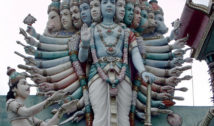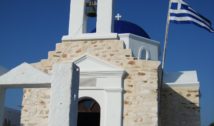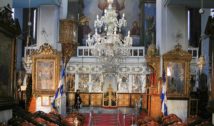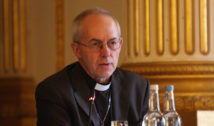Imbolc: How Pagans Celebrate the Coming Spring
- By C Barnett --
- 01 Feb 2017 --
Rituals of Imbolc and Lughnasadh festivals.
Different religions and traditions all over the world have their own way of celebrating the transition from one season to the next. For instance, the ancient Celtics and pagans of centuries past had several festivals to celebrate the end of one season and the beginning of another. These festivals include Samhain (fall season to winter), Imbolc (winter to spring), Beltane (spring to summer) and Lughnasadh (summer to fall). Neopagans also mark these festivals, and the Imbolc holiday falls around February 2 every year.
Imbolc: How Pagans Celebrate the Coming Spring[/tweetthis]
Imbolc is derived from an Irish word that refers to sheep’s milk.[/tweetit] This is due to the fact that ewes began lactating just when spring was unfolding. This was a sign that winter was on its deathbed and the lush spring was being ushered in. Imbolc is also known as Brigid’s Day. Brigid is a Celtic Deity and is also known as St. Brigid among Catholics. According to Celtics, Brigid is the goddess of fertility and represents light, regeneration, and livestock.
There are different ways of celebrating the Imbolc holiday, though the festivities revolve around spiritual purification and dedication. Bonfires and processions of people lifting torches are also a prominent feature of the holiday. There are rites and rituals that are supposed to cleanse the body and mind of adherents in preparation for the new season and the New Year.
The Imbolc holiday has Christian and modern versions of the holiday, and the Groundhog Day and Candlemas Celebrations are believed to have arisen from the Imbolc holiday. The Candlemas celebration marks the offering of children to Jesus Christ while also standing for the coming of light to the world.
Imbolc : Spring Has Sprung, Finally! https://t.co/g4eJseEXm7 via @priestess_tarot
— Catherine Green (@SpookyMrsGreen) February 1, 2017
The Lughnasadh holiday falls opposite to the Imbolc holiday on The Wheel of the Year, which is used as a calendar by Wiccans and other Neopagans. As such, while the Northern Hemisphere is celebrating Imbolc, the Southern Hemisphere will be celebrating Lughnasadh. The Lughnasadh is celebrated every year on July 31 or August 1 in the Northern Hemisphere. Activities held during this holiday include offerings of plants and animals, funeral games and visiting holly wells with a healthy sprinkling of feasting and making merry.
The Lughnasadh is attributed to the Irish god Lug, who created the holiday to honor his mother Tailtiu, the goddess of drying vegetation that feeds and sustains people. Drying vegetation includes harvested crops.



















